Palæoboreanic Languages
Copyright © 1999-2020 C.E. by Dustin Jon Scott
Introduction
The Palæoboreanic language family contained numerous languages and dialects. The original dialects of the Proto-Boreanic language, from which the main branches of the Palæoboreanic language family emerged, could be loosely classified as Urban, Sylvan, Terran, and Meran, or by region (e.g., due to trade networks, there would be certain qualities of speech that would cause some observers to perceive a singular "Urban" dialect spoken in numerous urban centers over a large area, however any given urban center would contain its own subdialect that would be in many ways more similar to the subdialects of Sylvan spoken by the woodland peoples in that region, and/or to the subdialects of Meric spoken by the seafolk who make port there, to the subdialects of Terran spoken by nearby Dwarves and miners, et cetera; thus a given local dialects place in the "dialect continuum" could be described using these "coordinates" — Southeastern Meric, Northwestern Urban, et cetera).
Writing Systems
|
The Elderrunes — the prototypical script of the Palæoboreanic language family. |
|
|
The Elvenrunes — an elaboration on the Elder |
| Consonants | ||
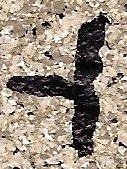 |
General bilabial glyph. /p/ or /b/ (not contrasted), and sometimes lengthened to /m/. | |
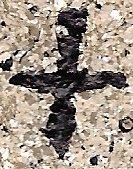 |
General alveolar glyph. /t/, or /d/ (not contrasted), and sometimes lengthened to /n/. | |
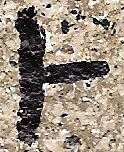 |
General vellar glyph. /k/, or /g/ (not contrasted), and sometimes lengthened to /ŋ/. | |
| Vowels | ||
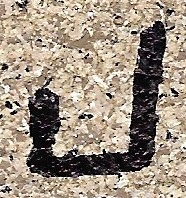 |
||
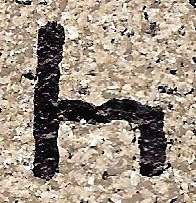 |
||
 |
||
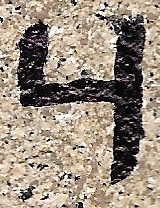 |
||
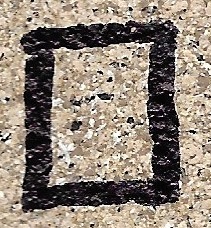 |
||
Spoken Languages
The original Proto-Palæoboreanic “language” was in reality not quite a full-fledged, proper language. This pseudo-language was in fact an absolute proto-language: It lacked auxilliary verbs, had little-to-no distinction between nouns and verbs, and used non-arbitrary phonaesthemes rather than arbitrary phonemes as most true languages (which is not to say that true languages have no internal phonaesthemic system; many surely do!) strung together into somewhere between word-like and sentence-like sequences that were vague and information-rate inefficient compared with true languages, often being what an English-speaker would perceive as sentence-length but imparting about as much information as a moderately inflected word, and without as much specificity. In many ways, the original Proto-Palæoboreanic tongue was more like the communication of crows. Out of this crow-like, or almost stereotypically “cave-man-like” system of communication, structures alike those found in true languages began to emerge: root words, affixes, auxillary verbs; agglutination, root-inflection, fusion, isolation and polysynthesis; all from a system of a communication that most would likely regard as little more than a system of squaks and grunts.
The structure of Proto-Palæoboreanic, as well as many of the languages that descended from it, was phonaesthemically oligosynthetic. Every phoneme in their inventory had a phonaesthemic meaning attatched to it, and was never used in a manner inconsistent with this. Their phoneme/phonaestheme inventory could be divided into two groups: consonemes and volonemes. Among consonemes, labials tended to be used in reference to placement, alveolars for action, and velars for abstractions. Among volonemes, open vowels conveyed receptiveness ranging from passiveness to femininity, mid front vowels corresponded to activeness and transitivity as well as agency, close front vowels represented descriptiveness and adjectivity, close back vowels were associated with projectiveness from intransitivity to masculinity, and mid back vowels indicated transformation and causativity, and were often found marking gerunds and mass nouns, in many cases corresponding to English words ending in "-ness", "-ity", "-ation", or the like. In the initial proto-language, consonemes were treated as the most salient, and the volonemes seemed to inflect them, reminiscent of root-inflection or ablaut. All of these sounds tended to have meanings that could be expanded metaphorically and from that expanded semantic base, specified situationally, generating more language-like morphology and syntax.
While none of the speakers of the Palæoboreanic language family were anatomically modern Homo sapiens sapiens, the evolution of this language family from its earliest proto-linguistic roots similar to other forms of animal communication into recognizably humanlike language nonetheless serves as a demonstration of how human language might’ve developed from other forms of animal communication.
For more information, see Palæoboreanic language.
Note that for the Proto-Palæoboreanic language below, speakers would have either said (the part in parentheses [or) the part in brackets], but not both. Thus, "(uh-u[n)u-hu]" indicates the word would have been pronounced either as "uh-un" or "nu-hu".
Basic diversification patterns:
Prefixing: ana-uhu-unu-ihi-ionio
Suffixing: ana-unu-uhu-ionio-ihi
Pre-infixing: ana-uhu-nu-iohi-nio
Post-infixing: ana-unu-hu-ioni-hio
Prefixing Patterns:
Open prefixing: na-hu-nu-hi-nio
Closed prefixing: an-uh-un-ih-ion
Suffixing Patterns:
Open suffixing: na-nu-hu-nio-hi
Closed suffixing: an-un-uh-ion-ih
Infixing Patterns:
Open infixing: na-nu-hu-ni-hio
Closed infixing: an-un-uh-ioh-in
Open pre-infixing: na-hu-nu-hi-nio
Closed pre-infixing: an-uh-un-ioh-in
Open post-infixing: na-nu-hu-ni-hio
Closed post-infixing: an-un-uh-ion-ih
Open Patterns:
Open prefixing: na-hu-nu-hi-nio
Open suffixing: na-nu-hu-nio-hi
Open infixing: na-nu-hu-ni-hio
Closed Patterns:
Closed prefixing: an-uh-un-ih-ion
Closed suffixing: an-un-uh-ion-ih
Closed infixing: an-un-uh-ioh-in
- Proto-Palæoboreanic - *(a[n)a]-((u[h)u]-[(u[n)u]-(u[h)u]]-((i[h)i-[(io[n)io]-(i[h)i]] or *((i[h)i-[(io[n)io]-(i[h)i]]-((u[h)u]-[(u[n)u]-(u[h)u]]-(a[n)a]
- Suffixing Dialects / Proto-Hyperboreanic - *(a[n)a]-(u[n)u]-(u[h)u]-(io[n)io]-(i[h)i] or *(io[n)io]-(i[h)i]-(u[n)u]-(u[h)u]-(a[n)a]
- Dialect #1 - *an(a)-un(u)-uh(u)-ion(io)-ih(i) or *ion(io)-ih(i)-un(u)-uh(u)-an(a)
- Dialect #1A - *an(a)-unuh(u)-ionih(i)
- Dialect #1Aα - *an(a)-unuh(u)-ionh(i)
- Dialect #1Aβ - *an(a)-unh(u)-ionih(i)
- Dialect #1B - *ionih(i)-unuh(u)-an(a)
- Dialect #1Bα - *ionh(i)-unuh(u)-an(a)
- Dialect #1Bβ - *ionih(i)-unh(u)-an(a)
- Dialect #2 - *(a)na-(u)nu-(u)hu-(io)nio-(i)hi or *(io)nio-(i)hi-(u)nu-(u)hu-(a)na
- Dialect #2A - *(a)na-(u)nuhu-(io)niohi
- Dialect #2Aα - *(a)na-(u)nhu-(io)niohi or *(io)niohi-(u)nhu-(a)na
- Dialect #2B - *(io)niohi-(u)nuhu-(a)na
- Dialect #2Bα - *(io)niohi-(u)nhu-(a)na
- Dialect #2Bα-I - *niohi-ru-na
- Prefixing Dialects / Proto-Zephyroboreanic - *(a[n)a]-(u[h)u]-(u[n)u]-(i[h)i]-(io[n)io] or *(i[h)i]-(io[n)io]-(u[h)u]-(u[n)u]-(a[n)a]
- Dialect #A - *an(a)-uh(u)-un(u)-ih(i)-ion(io) or *ih(i)-ion(io)-uh(u)-un(u)-an(a)
- Dialect #A1 - *an(a)-uhun(u)-ihion(io)
- Dialect #A1α - *an(a)-uhn(u)-ihion
- Dialect #A2 - *ihion(io)-uhun(u)-an(a)
- Dialect #A2α - *ihion-uhn(u)-an(a)
- Dialect #B - *(a)na-(u)hu-(u)nu-(i)hi-(io)nio or *(i)hi-(io)nio-(u)hu-(u)nu-(a)na
- Dialect #B1 - *(a)na-(u)hunu-(i)hinio
- Dialect #B1α - *(a)na-(u)hunu-(i)hnio
- Dialect #B1β - *(a)na-(u)hnu-(i)hinio
- Dialect #B2 - **(i)hinio-(u)hunu-(a)na
- Dialect #B2α - *(i)hnio-(u)hunu-(a)na
- Dialect #B2β - *(i)hinio-(u)hnu-(a)na
- Infixing Dialects / Proto-Notoboreanic - *(a[n)a]-(uh-u[n)u-hu]-(ioh-i[n)i-hio] or *(ioh-i[n)i-hio]-(uh-u[n)u-hu]-(a[n)a]
- North Notoboreanic
- West Notoboreanic - *an(a)-uh-un(u)-ioh-in(io) or *ioh-in(io)-uh-un(u)-an(a)
- Proto-Montane - *an(a)-uhn(u)-iohin(io)
- Proto-Ogrish - *an-uŋr-iohn
- Old Ogrish - anuŋrior
- Mountain Ogrish - anuŋrior
- Hill Ogrish - anuŋrior
- Proto-Chthonic - *iohn(io)-uh-un(u)-an(a)
- Proto-Dwarvish - *ior-uhn-an
- Old Dwarvish - ioruwran
- Mountain Dwarvish - ioruwran
- Hill Dwarvish - ioruwran
- Under-Dwarvish - ioruwran
- East Notoboreanic - *(a)na-(u)nuhu-(io)nihio or *(io)nihio-(u)nuhu-(a)na
- Proto-Sylvanic - *(a)na-(u)nhu-(io)nihio
- Common Sylvanic - *na-ru-nhio
- Old Sylvanese - narulio
- Middle Sylvan - naroliu
- Late Sylvan - naroleu
- Common Fairish - loraleu
- Old Elven - velunarulio
- Old Lightelven - veyunaruwio
- Sunelven - veyunaruwio
- Moonelven - veyunaruwio
- Old Woodelven - velonaroliu
- Old Seelie - valanaruyio
- Dark Sylvanic - *an-ur-ionh
- Dark Sylvanese - ænuriol
- Dark Sylvan - ænuriol
- Darkelven - ænuriol
- Nightelven - ænurio
- Swartelven - anoriul
- Unseelie - anuriol
- Proto-Borean - *(io)ni-hio-(u)nhu-(a)na
- Ancient Borean - nhio runa
- Old Borean - lio runa
- Middle Borean - lio runa or lio naru
- Late Borean
- West Borean
- Old Hesperian
- Old Reynesian
- Old Suddenese
- East Borean
- Old Morean
- Old Monastic - lio lavarunayio or lio valanaruyio
- Trinitarian - lio lavarunayio or lio balanaruyio
- Old Paynim - lio lavarunayio or lio balanaruyio
- Mortiferean - lio anuriol
- Old Kirsome - li anuriol
- Proto-Nomadic - *(io)ni-hio-(u)nhu-(a)na
- North Nomadic - nhiowana
- South-Nomadic - nhio yuna
- South Notoboreanic *an(a)-uh-un(u)-(io)ni-hio or *ioh-in(io)-(u)nu-hu-(a)na
- Proto-Orcish - *æn(æ)-ənh(ə)-(ia)nihia
- Old Orcan - *ænəŋnhia
- Old Ortch - *ænəŋria
- næŋri
- Proto-Merran - *ior(io)-(u)ñu-(a)na
|
Faenaril — |
|
|
Malnaril — |
ba = /ma/
be = /be/
bi = /fi/
by = /py/
bu = /vu/
bo = /wo/
da = /na/
de = /de/
di = /si/
dy = /ty/
du = /zu/
do = /ro/
ga = /nga/
ge = /ge/
gi = /xi/
gy = /ky/
gu = /ghu/
go = /yo/

